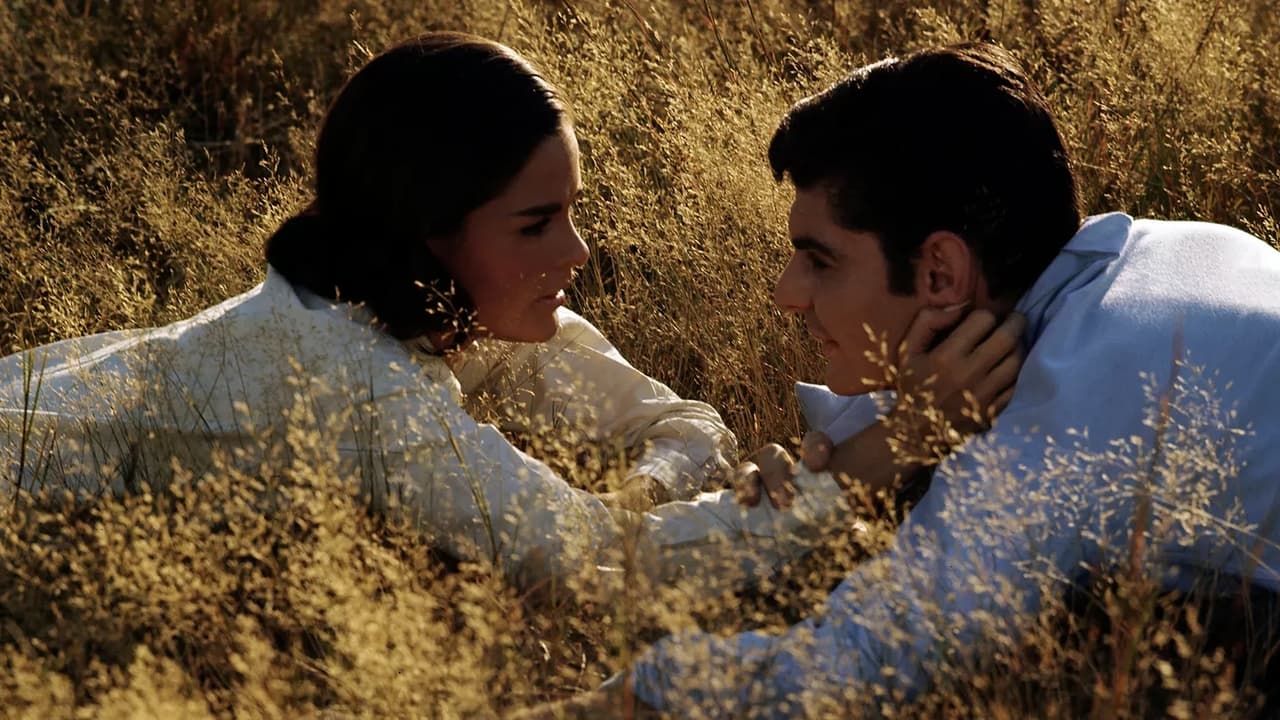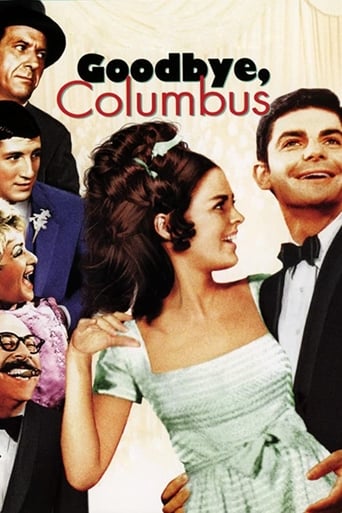

In The Graduate we loved the suspension of disbelief ending where Elaine rejects the charming yuppie guy chosen by her parents whom she has just wed to run off with Benjamin who she has previously rejected realizing he is her true love. However the ending of Goodbye Columbus where Neil realizes the reality of the situation and that a happily ever after relationship won't be possible and walks away is more realistic. We rejoice at 1 movie's ending while being just stunned by the other.
... View More"To be made a slave is to be stripped of any possible honour. But honour is, by definition, something that exists in the eyes of others. To be able to recover it, then, one must adopt the rules and standards of the society that deprived him of his honour in the first place." - David GraeberReleased in 1969, and directed by Larry Peerce, "Goodbye, Columbus" was based on a novel by Philip Roth. It stars Richard Benjamin as Neil Klugman, an army veteran who now works as a library clerk. Neil falls in love with Brenda Patimkin (Ali MacGraw), a wealthy college student. Their relationship is frowned upon by Brenda's fussy family.Better than the similarly themed "The Graduate", "Goodbye, Columbus" crackles with a brand of energy typical of the 1960s. Peerce's film is sceptical of post-war capitalism, its attached aspirations and values, and portrays Neil as a cynical type who deems the Patimkin family to be vapid and materialistic. Unlike anyone else in the film, Neil is also is intimately aware of social class. He compares himself to servants, comes out of the Army refusing to be used by anyone again, sympathises with black kids and is wary of being assimilated into the lives of the nouveau riche.But Peerce's film complicates familiar poor-boy-meets-rich-girl narratives. Brenda's father, hardworking and from humble backgrounds, is sympathetically portrayed. Neil, meanwhile, is pretentious, aloof and unconsciously a bit of a social-climber. Brenda herself is ultimately only interested in Neil as a means of infuriating her class-obsessed mother.It is thus unsurprising that Neil and Brenda's relationship ultimately breaks down. Unlike the climax to "The Graduate", where a jaded graduate runs off with the daughter of a lawyer, Neil and Brenda do their best to sabotage their own relationship. Neil taunts Brenda, makes fun of her plastic surgery, shallow friends and wealth, whilst she in turn cannot fathom life with a man determined to exist outside of her social circles. A vein of aggression thus exists beneath the couple's games of seduction; Neil the non-conformist who unconsciously desires conformity, forever passively aggressive toward Brenda, the conformist who fancies herself a rebel.In the 1960s, cinema reflected churning anti-establishment attitudes. Even in the mainstream, films like "In the Heat of the Night", "Cool Hand Luke" and so forth were garnering major awards, whilst books like David Brion Davis' "The Problem of Slavery in Western Culture" were picking up Pulitzers left, right and centre. "Goodbye, Columbus'" themes can also be found in the countless similar films released around about this time ("Easy Rider", "The Paper Chase", "The Graduate", "You're a Big Boy Now", "They Might be Giants", "The King of Marvin Gardens", "Smile", "The Swimmer", "Hair", "Get to Know Your Rabbit", "A Thousand Clowns, "Some Came Running", "The Sandpiper" etc), most of which dealt with generation gaps, issues of assimilation and featured young men – often model sons and exemplary students – who rejected mid-20th century white and blue collar conformity."Goodbye, Columbus" itself ends with rejection. Here Neil and Brenda split and return to their separate worlds, he to a life of books and bohemianism, she to a life of money and materialism. But both Neil and Brenda never stop wishing for validation from what are essentially ideologies they oppose; Neil still measures success in Brenda's terms, and vice versa."Goodbye, Columbus'" title alludes to young men and women who leave behind the protective havens of university halls, lose their innocence, "come of age" and experience the pitfalls of the "real world". As it was made in the 1960s, these pitfalls include everything from premarital sex to unwanted pregnancies to envious mothers to class-conflicts to issues of Jewish identity. Throw in casual nudity, wacky slow motion sequences, a serio-comic tone, and goofy close ups of breasts, bikinis and swaying buttocks, and you have a film that is overflowing with an almost sensationalistic need to break free of 1960s codes and conventions. That such a busy film works is thanks largely to Roth, whose source-material is sensitive and at times even wise."Goodbye, Columbus" was essentially Ali MacGraw's film debut. She had previously played a bit part in 1968's "A Lovely Way to Die", but "Columbus" finds her thrust into a starring role. A rapturous vision, she spins her way through Peerce's film, a princess whom the geeky Neil simultaneously despises and adores.8.5/10 – Underrated. See "They Might be Giants".
... View MoreAt the dinner table Harriet, Ron's fiancé, is supposed to call at 5 o'clock and Julie, his little sister, is confused and says that it already was 5 o'clock. She is then told that it is 5 o'clock in Columbus and asks if you could travel back and forth and never grow old. Brenda supports this sarcastically, "Oh that's right sweetie" and is than castigated by her mother for giving the younger sibling misinformation. I am assuming that they mean Columbus,Ohio, the location of Ohio State, Ron's school, but this makes no sense since Columbus, Ohio is in the same EST time zone as Purchase, New York where the action is taking place. This appeared to be a goof, but I was at a loss to explain it until I reread the original Philip Roth Novella, which placed Harriet in Milwaukee and in the Central Time Zone. The screenwriter put her in Columbus for some reason, but neglected to realize that Columbus is in the Eastern Time Zone and that this great dialog would have this inaccuracy.
... View MoreThis is the type of movie that will stand up to the test of time. I met Richard Benjamin once filming a stupid movie about a Black woman's daughter getting the wrong blood sample and realizing her father was white, Ted Dansen. He was very candid and open with me. I usually get this reaction as my great uncle was Leo McCarey who directed An Affair to Remember and The Bells of St. Mary's among others, and i realize that these famous people put their pants on just as you and i, one at a time. I was just out of college when this film came out and thus right in the middle of the sexual revolution of the 60s and 70s. I like particularly the scene where Richard and Kathryn meet in the hotel room for the first time to have sex and there is the argument about him wearing a condom. Great scene. The tackiness of her family is especially noted. You could see it with the cheap and cheesy type of decorations all over the house. Lots of red and velvet. The self possessed brother who went to Ohio St. also was a kick, always playing the stupid school basketball highlight record and reveling in his own sports accomplishments. There also had to be a little girl brat in the plot who was daddy's spoiled little daughter.And seeing the daddy running his business with the family not getting the point on any of it. All of it was worthwhile. Reading the book was better.Richard was poor, but had class and she the opposite. Proves that money does NOT buy class.
... View More